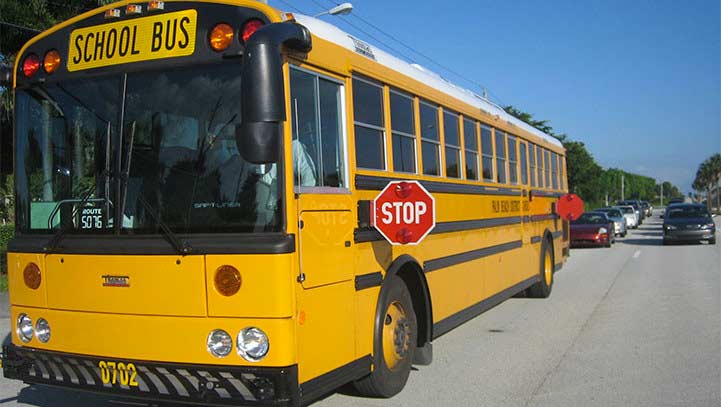
May 25, 2015
While most adults only attended school between September and May while growing up, many kids today take summer school classes to get ahead — or attend districts providing year-round programs. This means that school buses are transporting students year round in many parts of the country. While most bus drivers are conscientious, far too many still fall short and keep endangering children’s lives.
Here’s a brief look at some recent school bus accidents, statistics telling us more about these events – and a list of suggestions for keeping your children safe while riding as passengers.
Tragic school bus accidents in California and across the nation
Earlier this year, a Northern California school bus accident briefly trapped six students on board. Last year, one teen sadly lost her twin in a chartered bus that was taking “dozens of Southern California high school students ” to visit a college some hoped to later attend. A total of ten (10) people died in that last crash involving a Fed Ex big rig.
Just recently, a New York driver crashed a school bus with 35 kids aboard into a utility pole. What was the apparent cause of this side-swiping accident? “Troopers determined that [Mary] Coletti was operating the bus in an intoxicated condition — a subsequent breath test determined her blood-alcohol content to be 0.13%.” In the state of Kentucky, a small child was recently dragged by a school bus down a street after her backpack got caught in the door while she tried to exit.
Since California made seatbelts mandatory for children riding school busses long ago, some concerned parents are wondering what else can be done to protect their kids? Here are some recent statistics that shed a bit more light on these dangerous crashes.
Analyzing the statistics
- Between 2003 and 2012, one hundred and seventy-four “(174) school-age children died in school transportation- related crashes.” Of that number, fifty-five “(55) were occupants of school transportation vehicles and 119 were pedestrians ;”
- Each year, “eight (8) school-age pedestrians are killed by school transportation vehicles.” Another four die due to other vehicles involved in the school-bus related accidents;
- Between 2003 and 2012, “there were 89 crashes in which at least one occupant of a school transportation vehicle died. More than half of those (58%) involved at least one other vehicle ;
- As might be expected, the vast majority of the school buses accidents take place between 7 a.m. and 9 a.m. in the morning and 3 p.m. and 4 p.m. in the afternoon;
- When school bus fatalities occur, the bus is often hit in the front. Stated differently, “impacts to the front of school transportation vehicles occurred in 49 percent of fatal school-transportation- related crashes ;”
- Oddly enough, in terms of other routine accidents, most children struck by school buses [are] hit not when the buses [are] turning or making other odd maneuvers but when they [are] “ going straight.”
How to improve your child’s safety
- Strict hiring practices /refresher training. Make sure your child’s school district conducts thorough background checks on all driver applicants — and requires frequent refresher training courses for those who are hired;
- Regular bus and tire maintenance checks. Always be sure the school bus company conducts regular safety checks;
- Seatbelts and handrails. Remind your children to use these during every ride. Handrails can protect them from falling when others may be shoving their way onto or off the bus. Seatbelts can often prevent major injuries during accidents;
- Behavior on the bus. Every child must visit quietly with others on the bus and never try to “bully” or upset other kids or the driver. They should also never push or shove others — or throw any objects at one another. Be sure to regularly review these bus riding guidelines with your kids;
- Consider authorizing school bus drivers to issue negative behavior reports. Parents need to know if their kids are misbehaving so they can be properly punished;
- Carefully warn your children how to walk around a bus that has stopped. They need to understand that they’ll often be walking in “blind spots” of the bus driver – and others passing by. Tell your kids to only cross at street corners or where a school crossing guard indicates. Jaywalking must never be allowed – too many children are killed doing this;
- Install and maintain video monitors on each school bus. These can help keep track of everyone’s behavior – including that of the driver. Be sure the bus company or school reviews these tapes daily.
Elizabeth Smith is a freelance writer and graduate of the University of Texas Law School






